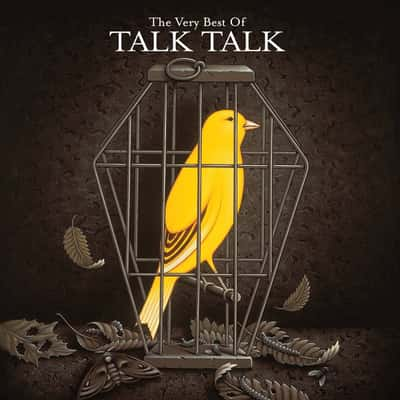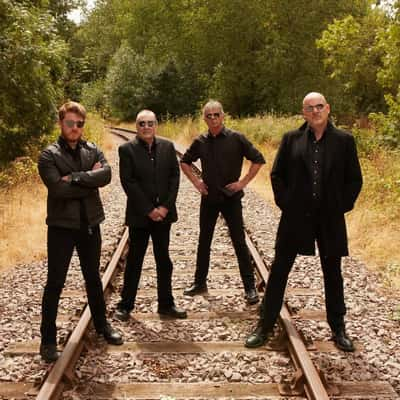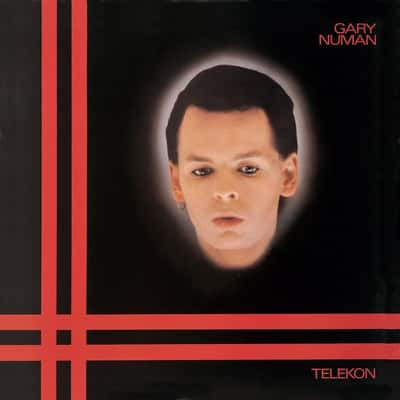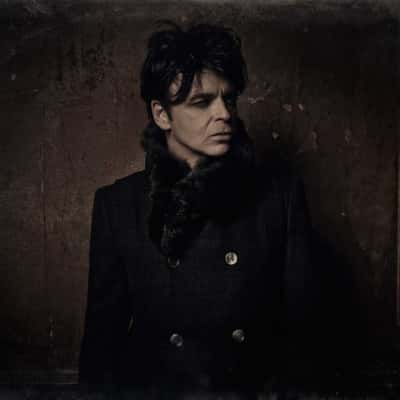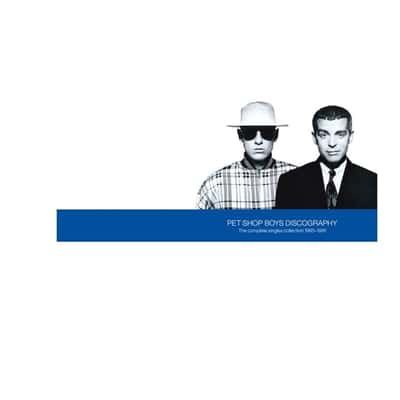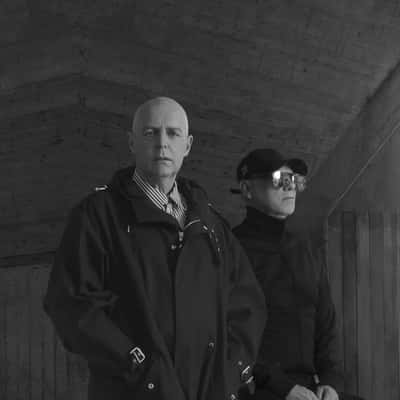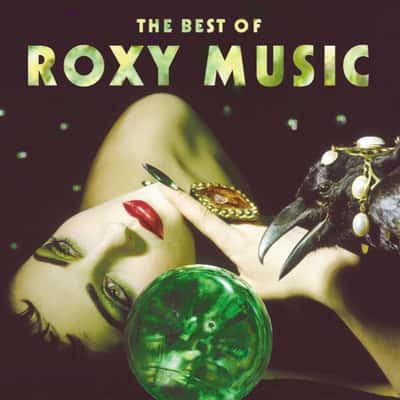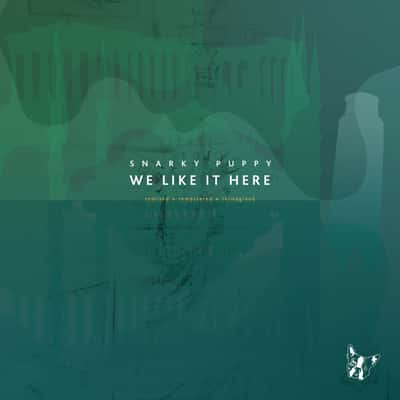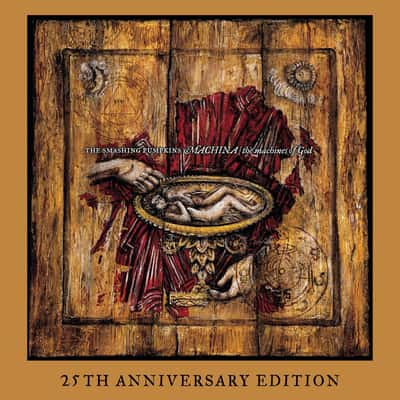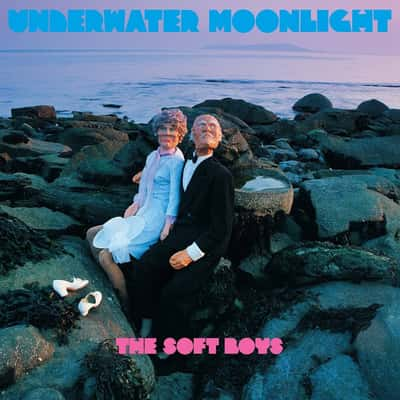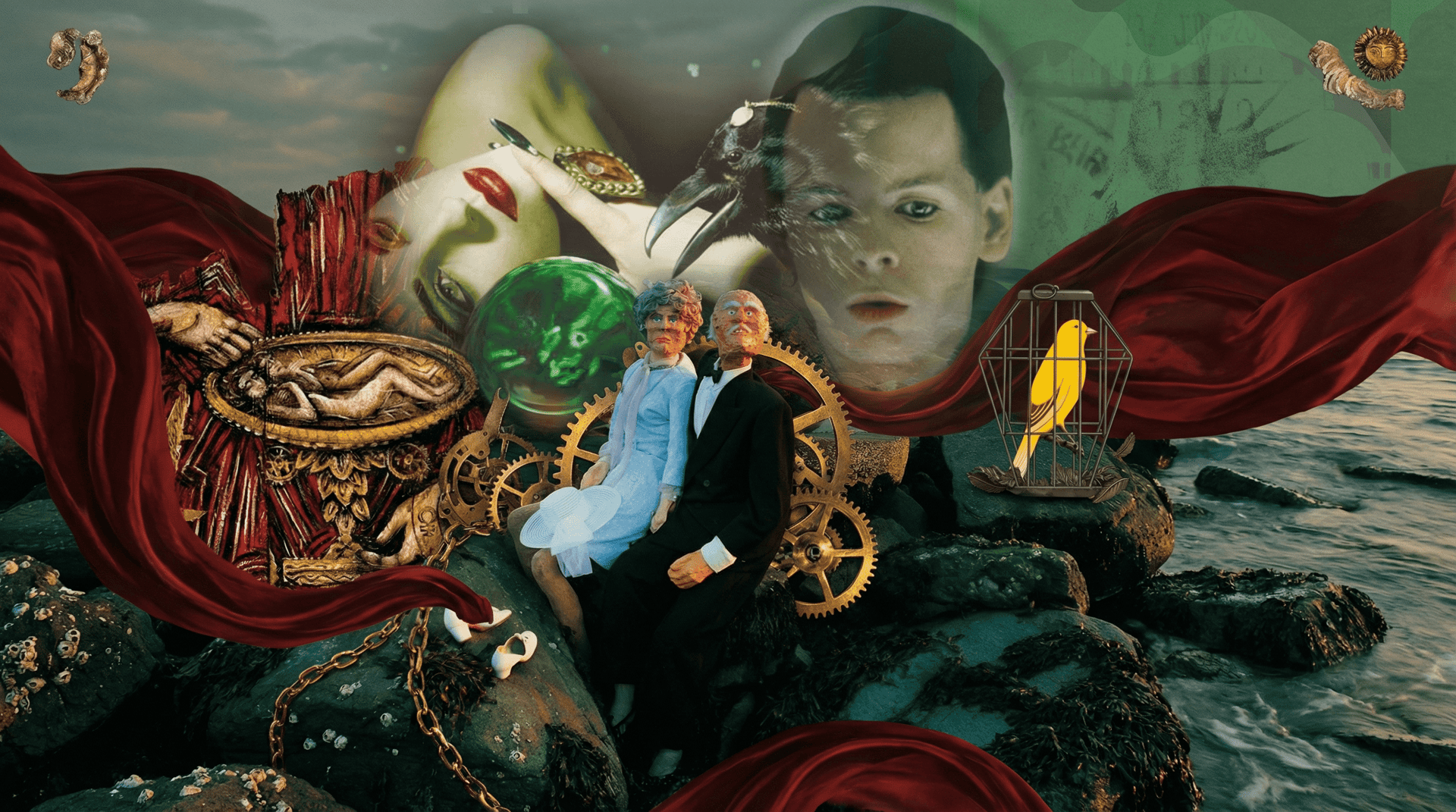
Telekon to Underwater Moonlight Stranglers Pet Shop Boys Roxy Music
Peaches: The Very Best of The Stranglers by The Stranglers 🍑
Night Buses and Neon: Why This Compilation Still Bites 🌃
Released in the UK on 27 May 2002, Peaches: The Very Best of The Stranglers distilled a quarter-century of snarling swagger and velvet melodies into a single, sharp-edged package. It wasn’t just a greatest-hits sweep—it was a reintroduction. In an era rediscovering post-punk chic, this set threaded the band’s feral early energy (Peaches, No More Heroes, 5 Minutes) through their opiated midnight moods (Golden Brown, Strange Little Girl) and glossy mid-’80s finesse (Skin Deep, Always the Sun). It’s both a door-kicking entry point and a street-lit tour of a band that never fit the punk template they were handed.
The Bass That Growled, The Keys That Hypnotized 🎹🐾
What set The Stranglers apart—captured vividly here—was that push-pull between menace and elegance. Jean-Jacques Burnel’s bulldozing bass gave punk its heavyweight champion, while Dave Greenfield’s arpeggiated, baroque-tinged keyboards turned songs into labyrinths. On Golden Brown, the harpsichord-like tones and hypnotic rhythm drift from pub jukeboxes to parlors, while Walk On By—Burt Bacharach rewritten with alley-cat swagger—became a staple of the band’s mystique: literate, cheeky, and unexpectedly expansive. The compilation highlights how production evolved from gritted-teeth urgency to widescreen sophistication without losing the band’s caustic wit.
Censors, Singles, and Street Lore 🚧
Peaches, the compilation’s emblem and namesake, was a scandal-scented hit in 1977, rubbing against broadcast standards while climbing the charts. Its leering lyric and slinky riff became shorthand for the slightly dangerous, very British summer. No More Heroes was a pub rallying cry disguised as philosophy, and Duchess offered aristocratic satire with a sing-along spine. These weren’t just singles—they were social postcards: blunt, clever, and wickedly hummable.
Two Suns: Punk Shadows to Pop Luminescence ☀️🌑
Peaches maps the band’s two primary suns. One burns with the black-leather aggression of the United Artists years (Grip, Nice ’N’ Sleazy, Hanging Around). The other is a warmer, late-afternoon glow of the Epic era (Always the Sun, Skin Deep, European Female). That duality is the compilation’s secret strength: sequencing that tells a story of evolution rather than offering a random jukebox. You can hear the shift from seething club floors to widescreen radio without a single identity crisis.
Cover Versions as Calling Cards 🎭
Their covers weren’t filler—they were provocations. Walk On By stretches into a psych-punk odyssey, while their take on The Kinks’ All Day and All of the Night turns British Invasion bite into a jackboot stomp. By the time you reach these moments in Peaches, you’ve absorbed a thesis: The Stranglers didn’t imitate—they reoriented.
Ripple Effects: From Britpop to Post-Punk Revival 🌊
The compilation landed as guitar bands were rummaging through late-’70s wardrobes. You can trace Stranglers DNA through Elastica’s taut minimalism, The Libertines’ raffish poetics, Interpol’s noir romanticism, and even the bass-forward punch of Muse’s early work. The group’s willingness to be muscular and melodic—streetwise and ornate—helped loosen genre boundaries for the 2000s wave of art-punk and post-punk revivalists.
Why Peaches Works in 2025 🍑⏳
As a single-disc statement, Peaches pulls off something rare: it honors the band’s contradictions without sanding down their edges. It also revived a broader appreciation—beyond the punk mythology—for their songwriting craftsmanship and studio curiosity. Whether you come for a summer-stained strut like Peaches, the hypnotic waltz of Golden Brown, or the sunburst uplift of Always the Sun, you leave with the image of a band that moved like a gang but thought like composers. That’s why this compilation endures: it’s not just the very best of The Stranglers—it’s the best argument for their singular place in British music.
Telekon by Gary Numan ⚙️🖤
Black-Red Circuits: Setting the Scene 🧥🔴
Released in September 1980, Telekon completed Gary Numan’s early trilogy of UK chart-topping albums—after Replicas and The Pleasure Principle—while deepening his dystopian synth-pop aesthetic. It’s the album where neon futurism meets post-tour exhaustion: a moody, chrome-plated companion to a moment when synths were rewriting the rulebook.
The Workshop: Machines, Musicians, and Mood 🛠️🎹
Numan’s signature Polymoog and Minimoog tones still lead, but Telekon leans into a hybrid approach—live drums (Cedric Sharpley) and bass (Paul Gardiner) locking with icy electronics. Longtime collaborators Chris Payne and Rrussell Bell add violin and guitar, giving the album organic friction against its circuitry. The sound is fuller, darker, and more human than The Pleasure Principle—less laboratory control, more static in the wires.
Songs from the Perimeter: What’s Inside 📼
This Wreckage opens like a shutter slamming; I’m an Agent snaps with paranoia in 4/4; I Dream of Wires mourns a future already obsolete; The Joy Circuit offers a bittersweet finale, a melody you could play under sodium streetlights. Notably, I Die: You Die—one of Numan’s sharpest singles—was left off the original UK LP at the label’s insistence and added to US editions and later reissues. We Are Glass, a standalone single from the same period, also haunted the album’s orbit without appearing on the original UK tracklist.
Built for the Teletour 🛰️🎟️
Telekon wasn’t just a record—it was a touring machine. The 1980–81 Teletour amplified Numan’s black-and-red visual code, all stark lighting and angular stagecraft. After two Wembley Arena farewell shows in 1981, he announced a dramatic (if temporary) retirement from live performance. That theatrical exit sealed Telekon’s aura: a burnished artifact of ambition meeting burnout.
Crossed Wires: Influence and Echoes 🔗
Numan’s synth writing on Telekon bled into the mainstream. Robert Palmer covered I Dream of Wires on Clues (1980) and collaborated with Numan, proof that Telekon’s chrome shimmer resonated beyond the post-punk underground. Later, industrial and alternative artists—from Nine Inch Nails to the broader darkwave scene—would tap this record’s blueprint: drum-machine pulse plus human unease; melody as a cold beam through fog.
Studio Alchemy: Precision with Friction 🧪
Telekon refines Numan’s science: stacked Polymoog strings, terse Minimoog leads, and a dry, forward drum sound that avoids disco gloss. It’s not just the gear—it’s the restraint. The arrangements leave air around the synths, making every snare hit feel like a door opening into an empty room. That economy gave the songs a literate tension, like sci-fi short stories told in circuitry.
Fractures Behind the Glass 🗯️
Numan has often described this era as emotionally difficult, and you can hear it. Remind Me to Smile isn’t a wink—it’s a wince; Remember I Was Vapour sounds like fame escaping through a vent. Telekon isn’t apocalyptic; it’s post-apocalyptic—surveying a landscape after the noise of sudden stardom and asking what’s left to build with.
Legacy: The Third Red Line 🏁✨
Telekon made history as Numan’s third straight UK No. 1 and still reads like a keystone text for synth-pop’s dark corridor. It bridged solitary electronic minimalism with band-driven heft, shaping how the 1980s would breathe—steel lungs, human heart. Today, its circuitry still hums through modern electro, industrial pop, and alt synth—proof that sometimes the future arrives with a bruise and a brilliant hook.
Discography (The Complete Singles Collection 1985–1991) by Pet Shop Boys 💿✨
Neon Timeline: How the Singles Tell the Story 🗓️
Released November 4, 1991, Discography isn’t just a greatest-hits package—it’s a time capsule of late-’80s synth-pop modernism. Sequenced chronologically from West End Girls to 1991’s new cuts DJ Culture and Was It Worth It?, the set lets you hear Pet Shop Boys evolve from cool, diaristic street tales to sleek, big-chorus confessionals. You can feel the duo’s shift from Thatcher-era urbanism to pan-European club elegance in real time, track by track. [Ref: Wikipedia; Official site]
The Art of the 7-inch: Edits, Mixes, and Intent 🎚️
A quiet flex: most tracks appear in their single or 7-inch versions, not album cuts—honoring how fans actually encountered these songs on radio and in shops. That decision makes Discography play like a transmission from Top 40’s golden age, where edit choices, intros, and breakdowns were surgical and purposeful. It’s also why the energy never dips; every hook is optimized for maximum synth sparkle. [Ref: AllMusic; Discogs listings]
Pop as Concept Art: The Sleeve and the Signal 📘🧠
The minimalist blue cover, crafted with longtime visual collaborator Mark Farrow, distills PSB’s design language—grids, restraint, immaculate type—into a cool, almost bureaucratic beauty. It framed the duo’s pop as serious modernist work, reinforcing how PSB blurred lines between pop product and gallery-ready concept. In 1991, when sleeves were busy and loud, this one whispered—and was impossible to ignore. [Ref: Creative Review; Farrow Design]
Subversive Brilliance: The U2/Frankie Valli Mash ⚡️🛣️
One of Discography’s most delicious provocations is including the 1991 single Where the Streets Have No Name (I Can’t Take My Eyes Off You), a sly mash of U2’s stadium yearning with Frankie Valli’s supper-club croon. It’s PSB at their cheekiest: replacing rock’s earnest roar with disco poise and camp intelligence—and still landing a hit. It also pairs with the caustic How Can You Expect to Be Taken Seriously?, a satire of rock-star piety. Together, they’re a manifesto about pop’s power to remix the canon. [Ref: Wikipedia]
Heart on a Drum Machine: Emotion Beneath the Ice ❄️❤️
Critics once branded PSB “detached,” but Discography reveals how tender these singles are. Being Boring became a fan scripture—its elegy for lost friends and faded nights glows with quiet dignity. It’s a Sin and Left to My Own Devices dress Catholic guilt and therapy-speak in Moroder-esque grandeur; Rent compresses class and love into three aching minutes; Always on My Mind proves pure feeling can ride a hi-NRG chassis. The contradiction—clinical textures, overflowing emotion—became their signature. [Ref: Rolling Stone; Songfacts]
Two New Signals: Culture Jamming and Curtain Call 📻🚦
To launch the compilation, PSB issued two fresh singles. DJ Culture dissects how media turns history into a remix, fitting for a duo who made irony danceable. Was It Worth It? arrived as a glittering, club-forward closer—and stands as the last brand-new PSB track to crack the UK Top 40 to date, a poignant milestone embedded in the set. [Ref: Wikipedia]
Impact and Afterglow 🌍🏆
Charting high and lingering on lists, Discography set the bar for singles anthologies: not just a bin of hits, but a narrative arc. You can draw a line from its immaculate sequencing and visual identity to later pop auteurs who treat singles runs as Gesamtkunstwerk—think Pet Shop Boys-descended elegance in artists like Robyn, Hot Chip, and Years & Years. More than a summary, Discography is a lesson: pop can be smart, stylish, and subversive—and still pack the floor.
- View Pet Shop Boys on russ.fm
The Best Of Roxy Music by Roxy Music ✨
A Silvered Mirror of a Decade 🎛️
Released in 2001, The Best Of Roxy Music plays like a time-lapse of elegance and experimentation—from the lacquered cool of Avalon-era sophistication back to the coy chaos of early art-rock provocations. Sequenced chronologically, it quietly maps Brian Ferry’s journey from glam futurist to velvet-collar crooner, with the band’s shape-shifting lineup (including Brian Eno’s early synth alchemy) leaving a glittering trail through pop’s laboratory.
Sequencing as Storytelling 📜➡️
Rather than a jumble of hits, this collection unfolds as a narrative arc. By starting with the satin sheen of “Avalon” and “More Than This” and winding back toward “Virginia Plain” and “Do the Strand,” it lets you hear the polish peel back—forensic listening to how Roxy turned outsider experiments into mainstream seduction. You feel the textures change: the art-school twitch becomes nightclub glide.
The Lennon Link and a Eulogy That Topped the Charts 🕊️
Roxy’s haunting version of “Jealous Guy,” recorded as a tribute after John Lennon’s death, became their only UK No. 1 single. On this set, it’s a tonal hinge: Ferry’s restrained vocal sits like a candle in a glass—fragile, luminous—bridging the band’s cerebral roots and its mature poise. It’s a reminder that Roxy could do reverence without losing mystique.
Craft, Console, Couture 🎚️🧵
Roxy Music were as much about texture as melody: tape-saturated warmth, oblique synth embroidery, saxophone as perfume. This anthology benefits from modern mastering that underscores the band’s studio arc—from the adventurous edges of early ‘70s production to the opulent spaciousness of the early ‘80s. Listen to “Same Old Scene” and “Oh Yeah”: you can hear the band distilling disco, minimalism, and art-rock into a glass-clear nocturne.
Picture-Book Glamour, Page-Turner Ideas 📸
Even as cover iconography evolved from pin-up provocation to understated luxe, the music held the throughline: style as intellect. The compilation leans into that duality—pairing audacious early singles (“Do the Strand,” “Street Life”) with later widescreen ballads (“Avalon,” “More Than This”). The effect is cinematic: Roxy as auteurs, not just hitmakers.
Influence: From Post-Punk to Pop Maximalism 🌐
This set doubles as a Rosetta Stone for modern pop:
- New romantics borrowed Roxy’s dapper futurism; Duran Duran took notes on how to be both glamorous and weird.
- Art-pop auteurs (St. Vincent, Jarvis Cocker) inherited the balancing act of irony and sincerity.
- The tasteful melancholy of “More Than This” echoes through chillwave and sophisti-pop revivals; “Love Is the Drug” remains a bassline blueprint for dance-rock swagger.
Fan Lore and the Deep-Cut Illusion 🕳️💡
Even as a singles-forward anthology, The Best Of Roxy Music feels like a gateway drug to the albums. Fans revel in its sequencing because it implies the deep catalogue: the angular theater of For Your Pleasure, the cool geometry of Flesh + Blood, the dreamlike drift of Avalon. If you arrive for the big hits, you leave with a map to the strange and beautiful corners.
Why This Compilation Still Works Today 🧭
In a playlist world, this album provides context—showing how a band can evolve without shedding identity. It’s a model of curation-as-criticism: a story told through arrangement, dynamics, and mood. Put it on and you hear not just a “best of,” but the sound of pop learning to be art—and art deciding to dance.
We Like It Here (Remixed + Remastered + Reimagined) by Snarky Puppy 🎛️🐾
Utrecht, Revisited: A Room Becomes a Legend 🏠🇳🇱
In 2013, Snarky Puppy squeezed a lucky audience into Kytopia Studio in Utrecht, set up in a tight circle, and hit record. What they captured became folklore: blistering interplay, zero overdubs, and a communal electricity you can feel in your bones. The “Remixed + Remastered + Reimagined” edition returns to that room—but with a new microscope and a bigger canvas. It preserves the sweat and spontaneity while revealing the details tucked between the notes: the air around the bass clarinet, the room decay after a unison hit, the way the crowd inhales before a solo. It’s like watching a favorite film restored from a pristine negative—still the same story, now with the grain and glow intact. ✨
Faders, Not Fixes: The Art of the Remix 🎚️
This isn’t a vanity polish. The remix leans into the band’s choreography: side-stick ghosts in the pocket, Rhodes harmonics blooming at the edges, the sub-bass sitting deeper without smothering the horns. Kick and snare land with more intent, while percussion—often the unsung hero in the original—threads the transitions with new clarity. The result feels wider, warmer, and more intentional, yet stubbornly live. You hear players react in real time—the kind of micro-timing that DAWs can’t manufacture. 🧠🎧
“Lingus” and the Myth of the Solo 🔥🎹
Cory Henry’s synth solo on “Lingus” became modern fusion’s campfire story. In this edition, the runway into that solo is where the magic blossoms: the comping behind the melody sharpens, the call-and-response pops, and the band’s patience becomes a character of its own. The lift into the solo feels more hard-earned, the payoff even more volcanic. It’s not about making the solo bigger; it’s about making its ecosystem breathe. 🌋
Reimagined, Not Redone: New Angles on Familiar Shapes 🪞
“Reimagined” hints at thoughtful changes beyond fidelity—subtle arrangement shifts, alternate balances, and moments reframed to highlight different conversational partners. You might notice a guitar figure sitting forward where it once hid, or a horn voicing revealing its inner motion. It’s like walking the same Utrecht streets at night instead of day—landmarks unchanged, shadows telling new stories. 🌙
Studio as Stage, Audience as Instrument 🎤👥
Part of the original’s cult aura was its hybrid DNA: a studio record performed as if it were a club set. The rework honors that design. Crowd presence is curated—enough to place you in the circle, never enough to turn it into a bootleg. You feel the audience in the cymbal tails and between-song murmurs, tiny cues that intensify the risk-taking. That alchemy shaped a wave of “in-the-round” sessions across genres, from modern jazz collectives to bedroom-producer ensembles chasing that same living-room lightning. ⚡
Gearheads’ Corner: Texture over Tech Spec 🧰
The headline isn’t a new plug-in—it’s restraint. More headroom without blunting transients. Low-end extended, not inflated. Midrange decluttered so the polyrhythms knit rather than collide. Horns keep their bite without the harsh glaze; the Moog retains its wool but gains definition along the edges. If the first release felt like a great board mix, this one feels like stepping between the amps and the drum riser. You can almost smell the tubes. 🔌
Cultural Ripples and Player Pathways 🌍
“We Like It Here” turned a collective into a gateway drug: bandcamp kids learning odd meters, gospel players woodshedding fusion changes, classical heads softening to groove science. This edition lands in an era obsessed with process—isolated stems, behind-the-scenes clips, and hyper-detailed listening. It validates a decade of musicians who built their sound around community, risk, and groove literacy. It also reasserts Snarky Puppy’s blueprint: virtuosity as conversation, not exhibition. 🗣️
Why It Matters Now 🕰️
Remixes can fossilize the past. This one animates it. By tuning the ear to the ensemble rather than any single hero, it re-centers what made “We Like It Here” a touchstone: democracy at high speed, groove as a shared language, and the belief that live music can be both meticulous and messy in the best possible way. Put on headphones, sit in the circle, and remember—this is a band that made a room feel like a world. 🌐
Machina / The Machines Of God by The Smashing Pumpkins ⚙️🎸
Broadcast from the Broken Future 📡
At the turn of the millennium—dot-com hype humming, rock searching for a new skin—The Smashing Pumpkins beamed in Machina / The Machines of God (2000), a concept-album transmission about “Glass,” a messianic rock star, and his band, the Machines of God. Billy Corgan designed it as a modern myth: fame as cult, distortion as sacrament, salvation via signal. It’s grand, conflicted, and gloriously maximal—post-grunge romanticism spliced with industrial sheen and spiritual static.
The Sound of a Band Re-forging Itself 🔧
After the nocturnal electronics of Adore, Machina roars back with guitars—layered, liquid, and heavy—yet keeps the synth ghosts in the circuitry. Produced in collaboration with Flood and engineered by Howard Willing, the record layers dense, stained-glass arrangements: fuzzed bass, velvet synth beds, choirs of Corgan vocals, and drums that thump like factory pistons. Tracks like The Everlasting Gaze and Stand Inside Your Love fuse metallic churn with devotional sweep—shoegaze textures meeting arena drama. Even the ballads (Try, Try, Try) are wired with glitchy edges and melodic ache.
Lore, Myth, and the Gospel of Glass ✨
Corgan didn’t just write songs; he built a mythos. “Glass” is both caricature and confession, a mirror for the band’s fraught celebrity. The storyline bled into visuals, artwork, and live presentation—a proto-transmedia approach that anticipated how artists now thread narratives across platforms. The band’s name inside the story—The Machines of God—turns fandom and industry into literal machinery. It’s self-aware and operatic, critiquing the very rock machinery it rides.
Fractures in the Machine: Label Tensions and Part II 🧩
Here’s the twist most casual listeners miss: Machina was intended as a two-part saga. Virgin Records trimmed the vision to a single disc, leaving the second half, Machina II/The Friends & Enemies of Modern Music, to be self-released later in 2000—pressed in tiny vinyl runs and distributed free online to fan sites. In a pre-streaming era, this was radical: a major band seeding official downloads peer-to-peer. The move presaged open-release strategies artists use today, while cementing the project’s mythology as something bigger than a single retail CD.
Packaging, Symbols, and Hidden Channels 🌀
The album’s design leaned into sacred iconography and cryptic typography—saints in chrome, reliquaries of feedback—intended as devotional objects for a modern cult of music. Fans pored over artwork and liner symbols like tarot, parsing references to “Glass and the Ghost Children.” The aesthetic wasn’t mere ornament; it formed a secret doorway into the narrative, binding the music to a cathedral of images in the post-MTV, early-forum age.
Reception: Static on the Line 📻
Machina arrived in a climate wary of big statements. Nu-metal chest-thumped, pop surged, and critics debated the Pumpkins’ sincerity. Reviews were mixed; some heard bloat, others heard balm. Yet among devotees, the record became a codeword—an album that rewards immersion. Live, Stand Inside Your Love grew into a fan-lit torch song, and The Everlasting Gaze proved the band could still summon a jet-engine riff with spiritual intent.
Echoes in the Present: Influence and Afterlife 🌒
Machina’s blend of industrial pulse, shoegaze haze, and cathedral-sized emotion quietly influenced 2000s alt and post-rock acts who learned to stack guitars like stained glass and treat concept not as gimmick but architecture. The later-announced deluxe reissue efforts sought to restore the intended sequencing—acknowledging that Machina was always a narrative arc, not a pile of singles. In hindsight, its online release gambit, multimedia world-building, and genre-hybrid production read like a blueprint: the rock opera rebooted for the broadband age.
Why It Endures ⚡
Because Machina is the sound of a band wrestling with faith in music itself. It’s cracked chrome: devotional and disillusioned, ecstatic and exhausted. In its noise you can hear a question that still rings today—can art survive the machine and sanctify it at the same time? The Pumpkins didn’t resolve the paradox. They amplified it—and made it sing.
The Very Best of Talk Talk 🎛️
A Band in Two Mirrors 🔁
Talk Talk’s 1997 compilation, The Very Best of Talk Talk, isn’t just a playlist of hits—it’s a mirror held up to two versions of the same band. On one side: sleek, neon-lit sophisti-pop, the era of It’s My Life and Life’s What You Make It. On the other: the shadowed quiet of late-period art rock, where music breathes in slow, patient arcs—Spirit of Eden and Laughing Stock. This collection stitches those worlds together, revealing a group that shed its own skin while the radio kept calling. 📻➡️🌫️
Beyond the Singles: A Story in Sequencing 🧵
Unlike the 1990 hit set Natural History, this 1997 package spans further into the band’s radical transformation, juxtaposing chart staples with the atmospheric drift of later work. Hearing Dum Dum Girl or Such a Shame alongside the slow-melt textures of I Believe in You invites a kind of narrative listening—you can hear the band walking away from pop conventions in real time. It’s a compilation that teaches, not just reminds.
The Studio Alchemy ⚗️
Talk Talk’s studio evolution is part of the myth. Early tracks gleam with crisp LinnDrum pulses, bright synth stabs, and Mark Hollis’s elegantly tense phrasing. By the late ’80s, the group favored natural room bleed, minimal overdubs, and long takes. The shift wasn’t merely stylistic; it was philosophical. Even on a “best of,” you can hear the air around the instruments—piano creaks, bowed textures, tape-space—signposts of the band’s refusal to be flattened by pop expectations. 🎚️🎙️
The Hit That Refused to Die 🌍
It’s My Life became a migratory bird. A hit for Talk Talk in the ’80s, it returned to charts via No Doubt’s 2003 cover, sending a new generation back to Hollis’s original. That afterlife matters: The Very Best of Talk Talk often acts as a portal for listeners who arrive through that cover and stay for the radical beauty of the late material. A pop single as gateway drug to post-rock? That’s Talk Talk’s paradox. 🕊️
Mark Hollis’s Whispered Influence 🌫️
Though Talk Talk retreated from fame, their fingerprints spread everywhere. The slow-bloom dynamics heard here would quietly seed post-rock and art-pop—think Bark Psychosis, Elbow, Radiohead’s more spacious turns, even James Blake’s patience with silence. The very notion that restraint can be climactic—The Very Best of lets you trace that lineage from synth-sheen to spiritual austerity. 🎚️➡️🌌
Fan Reception: A Gentle Reappraisal 💿
When released in 1997, the compilation arrived as CD-era reappraisal culture was peaking. For casual fans, it offered the familiar hooks without demanding the full immersion of Spirit of Eden. For devotees, it was an argument: that the story of Talk Talk doesn’t split in two; it telescopes. Many used this disc as a map—back to the early singles, forward into the cathedral quiet of the late albums.
Sleeve Notes in Disguise 📜
Even without exhaustive liner essays, the track selection functions like annotated history: early EMI polish, mid-period confidence, and the late uncommercial masterpieces that rendered charts irrelevant. The sequencing makes a case for coherence across extremes—Hollis’s voice as the constant: clear, humane, and increasingly still. That stillness feels radical even now.
Why This Compilation Endures 🧭
- It bridges worlds: synth-pop entrances and art-rock exits in one listen.
- It’s an accessible doorway into challenging, influential late-period work.
- It documents a rare arc—mainstream success to uncompromising innovation—without apology.
- It keeps Mark Hollis’s quiet revolution within reach of anyone who presses play.
In the end, The Very Best of Talk Talk isn’t a verdict—it’s a travelogue. Start with the anthem that won’t age, stay for the songs that refuse to explain themselves, and you’ll hear the same band, twice transformed, still haunting the modern landscape. 🌒🎶
Amen (So Be It) by Paddy Casey 🍀🎸
Smoke, Strings, and a Dublin Debut 🎙️
Paddy Casey’s debut, Amen (So Be It), arrived on June 1, 1999—an intimate snapshot of a songwriter who preferred the hush of coffeehouses to the roar of stadiums. Produced by Pat Donne and Karl Odlum, the album captured Casey’s blend of busker’s warmth, soul leanings, and acoustic confessional tones, aligning him with the late-90s singer-songwriter wave while sounding distinctly Dublin at heart. It’s an album of small rooms and big feelings, delivered with an unfussy, lived-in clarity.
A Basement Sound That Breathed 🌫️🎛️
Part of this record’s charm is its tactile production: close-mic’d vocals, gently worn guitars, and unfussy arrangements that feel like they were designed not to impress, but to invite. Donne and Odlum gave Casey space—vocals sit forward, but the guitars and subtle rhythm work feel communal, like you’re in a circle with the players. That gave these songs longevity; they age like wood and wool, not chrome.
Sweet Suburban Sky and the TV Glow 📺✨
“Sweet Suburban Sky” became the door-opener, finding life beyond Ireland when it landed on Dawson’s Creek, bringing Casey’s music to a generation raised on teen dramas and mix CDs. It wasn’t a stadium anthem; it was a companion piece for long bus rides and late-night thinking. That placement helped introduce a wider audience to Casey’s bracing sincerity without sanding down his edges.
Folk Nerve, Soul Pulse 🎼💚
Amen (So Be It) sits at a crossroads: alternative folk at its core, with a quiet soulfulness in Casey’s phrasing and chord choices. Tracks like “Everybody Wants” balance social observation with pop sensibility, while gentler cuts lean into Irish storytelling tradition—intimate, bittersweet, never overwrought. You can hear the lineage: the observational wit of Irish folk, the introspection of 90s acoustic pop, and a hint of Motown economy in the hooks.
From Busker to Big Stages (Without Losing the Busker) 🚏➡️🏟️
The album earned strong critical notice and placed Casey on bills with U2, R.E.M., Pearl Jam, and The Pretenders—heavyweights who saw in him an authenticity that read loud even when he played soft. Crucially, he kept the busker’s ethos: play the song like you’re earning the room’s attention one line at a time. That approach elevated his live reputation and fed back into the album’s cult appeal.
The Irish Context: Post-Boom, Pre-Confessional Wave 🇮🇪📻
Released at the tail end of the 90s, Amen (So Be It) emerged alongside a rising tide of Irish singer-songwriters finding international footing. But Casey’s angle was different—less glossy than contemporaries, more grain-in-the-voice than sheen-on-the-radio. In an era increasingly leaning into electronica and maximalist pop, his debut felt like a deep breath—rooted, humane, and resolutely unhurried.
Legacy in the Quiet Details 🕊️🏆
- It set the tone for Casey’s career: heartfelt, community-minded, and allergic to overproduction.
- It helped nudge TV soundtracks toward acoustic, character-rich tunes—music that served mood over spectacle.
- For Irish audiences, it became one of those records you recommend with a knowing nod: understated, enduring, and distinctly ours.
Why It Still Resonates Today 🔁❤️
Because Amen (So Be It) isn’t trying to win the argument—it’s trying to meet you where you are. In an age of algorithmic pop, its human-scale warmth, unhurried storytelling, and street-bred sincerity feel radical again. Press play, and it still sounds like someone opening a notebook in a quiet room and telling the truth.
- View Paddy Casey on russ.fm
Gentō by bioscope 🌧️
Neon Rain, Faded Film 🎞️
Gentō feels like watching a city blur through a rain-streaked window—soft lights, distant footsteps, a story unfolding between moments. Released in late August 2023 and issued as a cassette via Gestalt Past Us and 稼働中 (KDN-001), bioscope’s album leans into the tactile romance of the analog age while sounding unmistakably modern. The project’s name itself—bioscope—hints at cinema’s earliest apparatus, and the record mirrors that gaze: observational, grainy, and intimate.
Cassette as Canvas 📼
This is not nostalgia for nostalgia’s sake. The cassette format isn’t a gimmick; it’s part of the texture. On Gentō, hiss behaves like weather, subtly shaping the emotional topography. Gestalt Past Us—known for quietly stunning ambient and experimental releases—paired with the boutique imprint 稼働中 underscores the album’s dual identity: global in reach, local in feeling. The subtle tape saturation and restrained mastering invite you to listen at lower volumes, the way one would eavesdrop on a hallway piano at night.
The Lantern Motif 🏮
“Gentō” can be read as “phantasmagoria,” “magic lantern,” or the act of projecting images—perfect for an album that plays like a moving slideshow. Tracks progress like lantern slides: vignettes of rainy platforms, elevator corridors, and dim apartments. Field recordings and gentle synths arrive as if through a door left ajar. Rather than big crescendos, the album favors patient illumination—small glows that guide you through shadow.
Micro-cities, Macro-feelings 🌆
Bioscope builds small urban worlds where micro-sounds do heavy emotional lifting: the memory-click of a camera shutter; a café’s spoon-on-porcelain swirl; the suggestion of a train two neighborhoods away. In a landscape crowded by maximal ambient, Gentō’s minimalism feels radical—closer to Hiroshi Yoshimura’s environmental poise or Chihei Hatakeyama’s soft-focus drift, yet less pastoral and more civic. It’s city music for people who notice reflections.
Cross-Pacific Currents 🌏
Singapore’s role in fostering tape-centric ambient culture is an under-told story, and Gentō is a crisp chapter in it. The record moves in conversation with East and Southeast Asian ambient networks—where labels and micro-presses trade editions, aesthetics, and design sensibilities. The visual language—monochrome photography, clean typography, rain motifs—travels as fluidly as the music. That continuity matters: listeners often discover albums like Gentō via art direction as much as sound.
The Craft You Don’t Hear 🛠️
One of Gentō’s quiet innovations is its restraint in stereo design. Many tracks sit close to center with tiny lateral shifts—more like a room rotating gently than a panorama. This gives the album an uncanny “staying-with-you” quality: you can loop it for hours without fatigue. The sequencing favors seams over cuts, and inter-track ambience bleeds just enough to feel continuous—like frames passing through a projector gate.
Listeners as Co-authors 📝
Gentō cultivated a particular kind of fandom: headphone walkers, late-night coders, journaling insomniacs. Reviews and community posts often fixate on where they listened—buses, overcast commutes, solitary kitchens—suggesting the album’s true instrument might be the listener’s environment. It’s environmental music not because it fills a space, but because it collaborates with it.
Echoes and Afterimages ✨
Though young, Gentō’s influence is already visible in a wave of indie ambient creators adopting cinematic titling, rain-soaked artwork, and cassette-first releases. It also aligns with a broader cultural turn toward “slow urbanism” in sound—music that doesn’t escape the city but tenderizes it. In an era of algorithmic overstimulation, bioscope’s lens is a refuge: not silence, but considerate attention.
Where It Lands Today 📍
Gentō is a love letter to the overlooked frame: the pause before the elevator dings, the hush after a door clicks shut. It’s music that asks for your presence and pays you back in clarity. Put it on, and the room becomes a scene—your scene—projected by a lantern you didn’t realize you were carrying.
Underwater Moonlight by The Soft Boys 🌕🐟
Tape Hiss and Tidal Pull: The Recording Journey 🎛️
Cut in 1979–80 on a shoestring at Spaceward Studios in Cambridge, Underwater Moonlight sounds both handmade and strangely luminous—like surfacing from a dream with sand still in your pockets. Engineer Mike Kemp helped bottle the group’s dual-guitar phosphorescence as Robyn Hitchcock and Kimberley Rew cross-hatched lines that felt equal parts Syd Barrett swirl and Byrds jangle. The band—Hitchcock, Rew, bassist Matthew Seligman, and drummer Morris Windsor—tracked fast and idiosyncratically, letting eccentric harmonies and spiky riffs sit against a warm, roomy drum sound. That friction—the handmade with the hallucinatory—became its fingerprint.
“I Wanna Destroy You” and Other Sirens 📣
The opener, “I Wanna Destroy You,” is a candy-coated hand grenade—bright harmonies detonating a savage media-age rant. Then come the sea-creatures: “Kingdom of Love” slinks with Velvet-esque menace; “Insanely Jealous” wobbles like a funhouse mirror of paranoia; “Queen of Eyes” gives the Rickenbacker shimmer a psychedelic wink. Even the title track floats in a briny reverie, guitars like moonlight raking the waves. It’s punk energy harnessed to 60s melody, calibrated for the post-punk dawn.
Outsiders at the Harbour: Context and Contradiction 🧭
Released in June 1980 on the scrappy Armageddon imprint after Radar Records’ collapse, the album arrived as post-punk favored stark angles and drum machines. The Soft Boys, by contrast, embraced sun-faded psychedelia and melodic excess—too colorful for the gray cityscape. They felt out of time, which is partly why they became timeless. Their Cambridge vantage point—away from London’s trend cycle—let them solder baroque humor to garage bite, a peculiarly English surrealism that dodged the dourness of the era.
Strings That Rippled Outward: Influence and Afterlife 🌊
Underwater Moonlight’s ripples reached far shores. Peter Buck of R.E.M. has long cited it as a touchstone, and you can hear its chiming DNA across college rock, jangle-pop, and the neo-psychedelic revivals that followed. Power-pop devotees learned from its bright/dark toggles; indie auteurs from its economy and eccentricity. After the original press sank into cult waters, reissues resurfaced it—most famously as “Underwater Moonlight… And How It Got There,” a treasure chest of demos that maps how those hooks were netted.
People in the Songs: Personal Threads 🧵
Hitchcock’s lyrics braid insect kingdoms, jealous apparitions, and seaside myth with wounded romance—diary entries written in luminous ink. Rew’s guitar answers with pointillist clarity, like lighthouse beams sweeping the fog. Seligman’s bass (he later recorded with Thomas Dolby and David Bowie) glues the reverie to the floorboards, while Windsor’s drumming keeps the carnival from drifting off the pier. It’s a band record—four temperaments pulling the same rope.
Why It Still Glows Today 🔭
The album’s magic lies in tension: sweet tunes with barbed hearts, vintage tones feeding modern anxieties. In an age of algorithmic gloss, its organic creaks and cracked-lacquer harmonies feel human, mischievous, alive. Play it loud and you hear a lost map for guitar bands; play it late and you hear a lantern swinging over black water. Either way, Underwater Moonlight doesn’t date—it bioluminesces.
Top Artists (Week 33)
- The Stranglers (20 plays)
- Gary Numan (18 plays)
- Pet Shop Boys (18 plays)
- Roxy Music (18 plays)
- Snarky Puppy (17 plays)
- The Smashing Pumpkins (16 plays)
- Talk Talk (15 plays)
- Paddy Casey (11 plays)
- bioscope (10 plays)
- The Soft Boys (10 plays)
Top Albums (Week 33)
- Peaches: The Very Best of the Stranglers by The Stranglers
- Telekon by Gary Numan
- Discography (The Complete Singles Collection 1985-1991) by Pet Shop Boys
- The Best Of Roxy Music by Roxy Music
- We Like It Here (Remixed + Remastered + Reimagined) by Snarky Puppy
- Machina / The Machines Of God by The Smashing Pumpkins
- The Very Best Of by Talk Talk
- Amen (So Be It). by Paddy Casey
- Gentō by bioscope
- Underwater Moonlight by The Soft Boys
